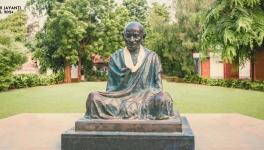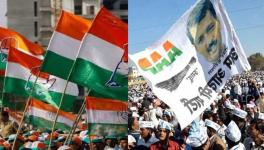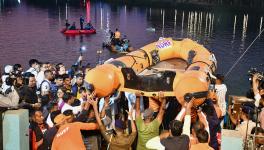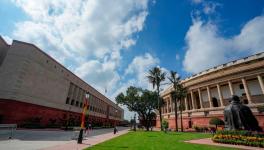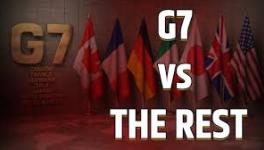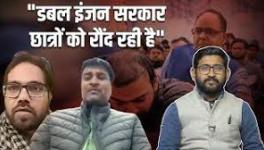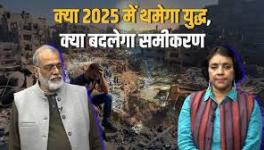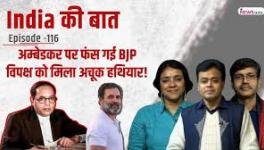Mumbo Jumbo as Science in the Science Congress
The 102nd Science Congress did not distinguish itself by inviting speakers, who offered mumbo jumbo as science. It was not helped by the Union Minister for Science and Technology, Harsha Vardhan talking about how India had discovered the Pythagoras “formula”, and algebra well before Greeks and Arabs but generously gave them the “credit”. The past is no longer about scientifically discovering what really happened, but a race of who did what first.
An argument is being presented that study of ancient Indian texts will reveal advanced science. This is the Batra science that is being taught in Gujarat schools; Batra is now advising NCERT and CBSE on revising the school syllabus. The Batra “gems” include the stem cell research in Mahabharata, repeated by Modi, television during the Mahabharata. He is propagating the belief of the RSS that it is not necessary to learn science. Instead, if we study ancient Sanskrit texts, we will get advanced science from it, well in advance of what we have today.
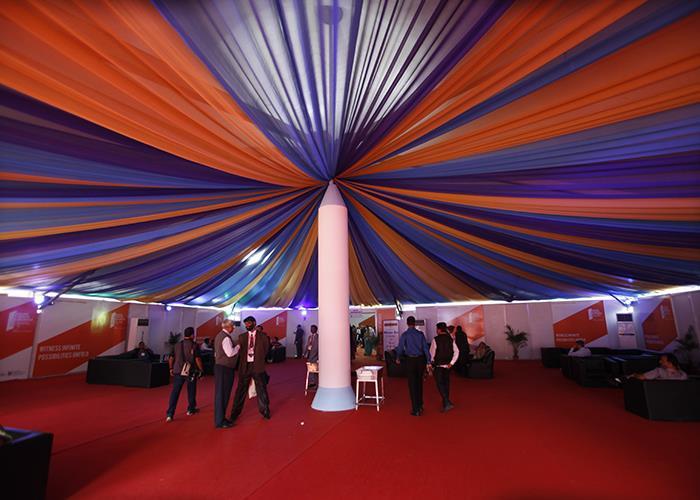
It is in this “spirit” that a session was organised to present 'Ancient Sciences through Sanskrit'. The purpose of linking science and Sanskrit is quite simple. One is to claim mythical advances in ancient texts as “science” and therefore claiming “firsts” for India in a game of hyper nationalism. The second is to help push Sanskrit and the “mother” of all Indian languages and make it compulsory – a part of the RSS agenda.
There is no doubt that Indian texts show many important and interesting results. There has been detailed study of sulbhasutras, various astronomical texts, and of course Indian mathematics. They show that Indians have many achievements to their credit. They also show that even in ancient times, ideas did not have monopoly of ownership – they flowed from one centre of civilisation to the other, enriching each of them. Indians probably received place value notation from Mesopotamians and gave back in turn, the zero. The creation of zero was not just about zero having no value (null value) but treating it as a number. Indians also learned from the Greeks in astronomy – one of the ancient texts of astronomy is Yavanajataka (Yavana are Greeks or Ionians as they were known then). The knowledge of the Greeks came to India through Alexander's invasion as also Indian knowledge being carried back by the Greeks. Aryabhatta, Bhaskara, Bramhagupta, Hemachandra, Madhava had made major advances to Indian astronomy and mathematics.
Why is it that the proponents of Vedic science or Sanskrit science reject such studies and turn to mythology and fantasy? The reason is a very simple one. It is the rejection of reason and empirical evidence and substitute it instead by faith as the basis of discovery. This is making claims about science while rejecting the method of science itself. In this exercise, only positive evidence is admitted, all negative evidence is rejected.
Harsha Vardhan's claims about Pythagoras formula and Pythagoras theorem brings out sharply the difference between faith based history of science as opposed to a real discovery in science. First, some facts. The ability of creating a right angle is very important. It helps in creating structures – the walls need to be at right angles to each other, in agriculture for cutting up and estimating area of fields etc. All ancient civilisations knew how to create right angles by using the property of a right angled triangle – the squares on two adjoining sides of the right angle is equal to the square on the hypotenuse. This manifested itself in a construction method – if we take a triangle of sides 3, 4, and 5 feet, the angle opposite to the side of 5 feet will be a right angle triangle. This was widely known and used. Egypt, Babylon, India and China have texts showing that this property of certain numbers gave them the ability to construct right angle triangles, and therefore use it as method of creating right angles.
Sulbhasutras give evidence of knowledge of such set of numbers (3,4,5; 5,12,13) etc, knew a different formulation of the Pythagoras theorem. Did they have a proof of the theorem at that time? This assertion needs evidence. A minister's claim, even if he is the Minister for Science and Technology is poor substitute for evidence.
Is the Pythagoras theorem of Greek origin? This is of importance only in the history of science. Martin Bernal, the historian in his book Black Athena has shown that Greeks borrowed heavily from the Egyptians and this property of right angle triangles was known to the Egyptians. The difference between a known property and a theorem is that a theorem has proof while a property observed repeatedly, still does not proove that there will not be specific examples that violate this property. It means that observing a number of white swans does not constitute a proof that there are no black swans.
The beauty of Pythagoras theorem is that it offers a proof. It shows that this property will hold true for all right angled triangles and not just a special one consisting of sides 3,4,5. It is this concept of proof that creates the difference what Harsha Vardhan called the Pythagoras formula and the Pythagoras theorem. The Chinese also had a proof of the Pythagoras theorem. It is possible so did
Indians and the Egyptians. For us, this neither makes the Greeks or the Chinese superior to us if we did not, nor does it give us special credit if had an earlier proof of the Pythagoras theorem. In order for a historian of science to show that either Egyptians or Indians had prior knowledge of such proofs, they will have to provide evidence.
Let us examine the Vaimānika Shāstra claims that have been widely reported in the press. This entire discussion is based on a Sanskrit text that was supposedly revealed to Subbarya Shashtry by the sage Bharadwaja through psychic channeling. Shastry lived from 1866 to 1940, while Bharadwaja lived at least 2,000 years before. If we take the claims of those who “presented” the knowledge of the Vimans in ancient India, Bharadwaja would have lived at least 9,000 years before Shashtry.
These texts had been thoroughly studied by aeronautical and mechanical engineers in the Indian Institute of Science. They had gone to Shashtry's birthplace, where he lived, to people who knew him, apart from textual analysis. Their conclusion was that this was not an ancient text – it was written in modern Sanskrit and shown no traces of Vedic Sanskrit or Sanskrit of other ancient texts. Therefore, this text was probably created in early 20th century. The second conclusion was that none of the Vimanas described in this text could have ever have flown. They were poor “concoctions” and had no understanding of aeronautics. The claims ancient India had planes that flew backwards and sideways, made inter planetary journeys wearing special materials from trees and vegetables, are not only fantastic but just fantasies. In other words, they were imaginative exercises in line with Jules Verne's novels. We could argue that Shashtry predates Jules Verne and therefore Shashtry could be considered as having penned such science fiction before Jules Verne. The problem is that Jules Verne did know the science of his times, which Shashtry's composition lacks any such knowledge.
This was not the only paper that was presented to the Congress. There was another one that talks about Vedic surgery. Again, contributions of Indian surgery in ancient times has been well-studied. Again, India shows evidence of certain advanced techniques and knowledge of anatomy – Sushruta and his texts show knowledge of medicine and surgery, and also an approach to empirical knowledge. What is lacking in the paper presented in the Indian Science Congress is any attempt to examine what is scientific knowledge in the text, how was it derived and what can today be considered valid science and what was not. Claims such as India could perform autopsies by putting dead bodies in water for three days and then rubbing the skin off is exactly the kind of “science” that should be discarded.
Manjul Bhargava, the first Indian (of Indian origin) to receive the Fields Medal in Mathematics was also in the Science Congress. He also shows deep appreciation of ancient science. The difference is that he is able to separate the mythical from the scientific. For example, he has talked about how Hemachandra discovered the series which is commonly called the Fibonacci series. Hemachandra predates Fibonacci. He also traces the knowledge of the properties of this series to Pingala and his classical work Chandashastras, which dates back to 500-200 BC. He also shows that Hemachandra showed how these numbers can be generated and stated certain relations that are now called recurrence relations in mathematics. In all this, he shows us evidence, relates it to mathematical knowledge today and traces its evolution. This is how any claims regarding our scientific discoveries have to be made. Not through assertions and claiming myths as scientific truths.
The danger of this RSS project is that instead of developing a critical approach and empirical evidence, science will become learning by rote and repeating fantastic claims. This is completely destructive of science. Learning science can only be done by doing it. Not learning Sanskrit in the hope that it will teach them scientific truths without needing to do any science.
Disclaimer: The views expressed here are the author's personal views, and do not necessarily represent the views of Newsclic
Get the latest reports & analysis with people's perspective on Protests, movements & deep analytical videos, discussions of the current affairs in your Telegram app. Subscribe to NewsClick's Telegram channel & get Real-Time updates on stories, as they get published on our website.









